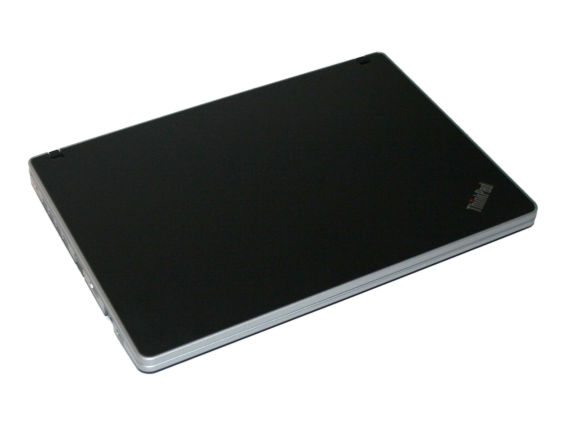Lenovo ThinkPad Edge 13: Not your Father's ThinkPad
by Vivek Gowri on April 7, 2010 1:40 AM ESTConclusion
The ThinkPad Edge ends up being a product of compromise, trying to bridge the gap between the business-like ThinkPads and the consumer-centric IdeaPads. But this leaves it somewhere in the middle. It’s a competent and functional laptop, but it’s not good at any one thing, it doesn’t stand out. And on top of that, it’s not a particularly good value. Sure, it costs about the same as the similarly specced Acer Timeline 3810T, but then we wouldn't necessarily recommend that laptop either. If you don't need VT-x, dropping to a Pentium SU4100 will get you about 97% of the SU7300 performance while saving $120.
The Edge 13 CULV can be had for $698, which is the $100 less than the base Alienware M11x (SU4100/2GB/160GB/GT335M) and only $50 less than the ASUS UL30Vt and UL80Vt, which both offer an overclockable SU7300, 4GB/500GB, and switchable NVIDIA G210M graphics. All three offer 8-cell batteries and more battery life than the ThinkPad Edge, in addition to the overall better specs. The Alienware is a legitimately serviceable portable gaming machine, and even though it weighs more and has a smaller screen than the Edge, the sheer amount of graphical horsepower packed into it is astounding. The two ASUS machines have excellent battery life and offer a dedicated GPU for those who need it (though not nearly as powerful as the M11x). The Edge simply does not feature anything compelling over those models. The build quality and keyboard are solid, but not at the classic ThinkPad level and not good enough to make up for the performance deficiencies.
So who is the ThinkPad Edge actually for? A business user would likely get a Dell Latitude for the same price or spend the extra $150 to get a real ThinkPad. Gamers obviously would go for the Alienware M11x, and multimedia/general mobile computing users would probably be more interested in the faster and longer-running ASUS UL series. Bring up the cheaper Acer Timeline series with SU4100 CPUs and it's difficult to recommend the ThinkPad Edge over competing offerings. The base AMD model at under $500 is a more attractive proposition, but you lose a lot of performance and with the 4-cell battery, you’re looking at a somewhat laughable three hours of runtime. So, maybe that’s not so attractive, especially priced in Timeline territory.
Ultimately, the ThinkPad Edge falls right in the middle of a large group of CULV laptops. It has the same performance, but for only slightly more money there are clearly faster laptops; there are also significantly cheaper laptops that provide essentially the same performance. The Edge lacks the build quality of the ThinkPad Classic, but then it's also over $200 cheaper. It should hold up reasonably well over time, and if you need ExpressCard/34 support with CULV it's one of the few offerings to fill that need. Still, there's not enough here to warrant a strong recommendation, unless you really like the matte black aesthetic. We feel most users will be better served by Lenovo's already successful business and consumer notebook lines; the Edge ends up sitting between the proverbial rock and a hard place.











34 Comments
View All Comments
xerophinity - Saturday, April 10, 2010 - link
This notebook doesn't deserve to have the name Thinkpad anywhere on it.. what the hell was Lenovo thinking? It's like BMW sourcing out a car design to GM and putting their name on it.orangesky - Tuesday, April 13, 2010 - link
According to Lenovo's website, and just about every other review I've read of the Edge 13, it does NOT have an EC/34 slot. The 14 & 15 does, but not the 13. Some 13.3 CULVs that do have it include Sony VAIO Y Series and the Dell Vostro V13 / Latitude 13.jolly_jugg - Tuesday, April 20, 2010 - link
"The CULV models start at $700 ($800 MSRP) and with few noteworthy benefits, the Edge is going to be a tough sell. The AMD model drops the price to under $500, but unfortunately battery life also plummets, so unless you're dying for a "Heatwave Red" ThinkPad the AMD Edge may not be the compromise you're after"I have to say your review appears pretty sarcastic. Lets assume the average battery life of both the machines (Average means all kind of applications like web browsing, word type, spreadsheet and multimedia) are 4 hours for intel machine and AMD comes 25% lower at 3 hours. Now are you implying a 25% more average battery power is worth compared to 60% higher average selling price for an Intel machine over AMD machine? Even if 50% of the folks agree with you, I am sure the other 50% will disagree with you. Sure battery power is important for a portable equipment, but equally as important is the price which in this case is 60% lower. For you that may not be the compromise you are looking for but for me its definitely a good compromise, particularly in these trying economic times where salaries are lower and returns are also pretty lower.
Sky Park Schiphol - Wednesday, April 21, 2010 - link
Very interesting. After all of the "you can only integrate the memory controller once" and "it locks you into a specific memory type" talk from Intel back in the Athlon 64 era, now they're taking that route with their ultra low power CPU/platform. Best machine ever, thanks for sharing and great comments. Thanks http://www.smartparkingschiphol.com/vliegvelden/sc...